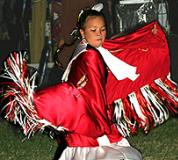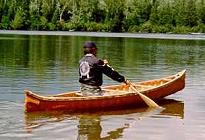 Les Indiens Algonquins (French version)
Les Indiens Algonquins (French version) Les Indiens Algonquins (French version)
Les Indiens Algonquins (French version)
North American Indian languages
 American Indian cultures
American Indian cultures
 American Indian art
American Indian art

 Algonquin Indian Fact Sheet
Algonquin Indian Fact SheetNative American Facts For Kids was written for young people learning about the Algonquins for school or home-schooling reports. We encourage students and teachers to visit our main Algonquin website for in-depth information about the tribe, but here are our answers to the questions we are most often asked by children, with Algonquin pictures and links we believe are suitable for all ages. Images are the property of the sources we have credited.



 Algonquin Tribe
Algonquin Tribe 




 How do you pronounce "Algonquin?" How do you spell it?
How do you pronounce "Algonquin?" How do you spell it? What does the word "Algonquin" mean?
What does the word "Algonquin" mean? Where do the Algonquins live?
Where do the Algonquins live? But weren't there Algonquin Indians in New York state?
But weren't there Algonquin Indians in New York state? How is the Algonquin Indian nation organized? Do they live on reservations?
How is the Algonquin Indian nation organized? Do they live on reservations?  Algonquin band flags |
Each Algonquin community lives on its own reserve, also known as a reservation. Reserves are land that belongs to the tribe and is legally under their control.
Each Algonquin tribe--known as a band or First Nation in Canada--is
politically independent and has its own leadership. Algonquin First Nations have their own
government, laws, police, and services, just like small countries. However, the Algonquins are also Canadian citizens and must obey Canadian law.
The leader of each Algonquin band is called ogima or ogema, which is translated as "chief" in English. The ogima used to be chosen by tribal councilmembers, often from the last chief's sons, nephews, or sons-in-law. Today chiefs are elected by the Algonquins, just like governors or mayors. |
 What language do the Algonquin people speak?
What language do the Algonquin people speak? What was Algonquin culture like in ancient times? What is it like now?
What was Algonquin culture like in ancient times? What is it like now? How do Algonquin Indian children live, and what did they do in the past?
How do Algonquin Indian children live, and what did they do in the past? Algonquin doll |
They do the same things all children do--play with each other, go to school and help around the house.
Many Algonquin children like to go hunting and fishing with their fathers. In the past, Indian kids had more
chores and less time to play, like early colonial children. But they did have toys, games and
dolls, like
this 18th-century doll in its miniature cradleboard.
Algonquin mothers, like ma ny Native Americans, carried their babies in cradleboards like these.
Older Algonquin kids enjoyed playing lacrosse
like the adults. In some communities only men and teenage boys played lacrosse, but in others, girls and women played as well. ny Native Americans, carried their babies in cradleboards like these.
Older Algonquin kids enjoyed playing lacrosse
like the adults. In some communities only men and teenage boys played lacrosse, but in others, girls and women played as well.
|
 What were Algonquin men and women's roles?
What were Algonquin men and women's roles? What were Algonquin homes like in the past?
What were Algonquin homes like in the past? Wigwam in Ontario |
The Algonquins didn't live in tepees. For most of the year they lived in settled villages of birchbark houses,
called waginogans or wigwams. Algonquin wigwams were usually dome-shaped and not very large--
only a single family unit lived in each one. In some Algonquin communities, multiple families from the same clan would live together in a
much larger birchbark longhouse, like their Iroquois neighbors. During the winter, the village split up to go to hunting camps, and each
Algonquin family would build a cone-shaped shelter like
this for their camp.
These shelters were temporary and were discarded whenever the family needed to move. At the end of winter,
they would move back to the permanent summer lodges in their village.
Here are some more pictures of American Indian houses like
the ones the Algonquins used.
Today, Native Americans only build a birchbark lodge for fun or to connect with their heritage. Most Algonquin people live in modern houses and apartment buildings, just like you. |
 What was Algonquin clothing like? Did they wear feather headdresses and face paint?
What was Algonquin clothing like? Did they wear feather headdresses and face paint? Chief Rocky Boy  Moccasin |
Algonquin women wore long dresses with removable sleeves and the men wore
breechcloths and leggings.
Both genders wore moccasins
on their feet and cloaks in bad weather. Later, the Algonquins adapted European costume such as cloth blouses and buckskin jackets,
decorating the front with fancy beadwork.
The Ojibway chief to the left is wearing
the same style of clothing Algonquin men did. Here are
more pictures of Ojibway and Algonquin clothing styles,
and some photos and links about Native American clothing in general.
Some Algonquin warriors wore their hair in the Mohawk style, shaving the sides and using grease to stiffen the strip of hair in the middle so that it stood up high. Otherwise, Algonquin men and women both wore their hair in long braids. Some men wore a porcupine roach with a feather in it. (These roaches are made of porcupine hair, not the sharp quills!) In the 1800's, some Algonquin chiefs began wearing a feathered headdress like their neighbors the Sioux. The Algonquins painted their faces and arms with bright colors. They used different patterns for war paint and festive decoration. Some Algonquin men also wore elaborate tribal tattoos. Today, some Algonquin people still wear moccasins or a buck  skin jacket, but they wear modern clothes
like jeans instead of breechcloths... and they only wear feathers in their hair on special occasions like a dance. skin jacket, but they wear modern clothes
like jeans instead of breechcloths... and they only wear feathers in their hair on special occasions like a dance.
|
 What was Algonquin transportation like in the days before cars? Did they paddle canoes?
What was Algonquin transportation like in the days before cars? Did they paddle canoes? |
Yes--the Algonquin Indian tribe was famous for their birchbark canoes. Here is a website with pictures of
Native American canoes.
Canoeing is still popular in the Algonquin nation today. Over land, the Algonquins used dogs as pack animals.
(There were no horses in North America unt il colonists brought them over from Europe.)
The Algonquins used
sleds and snowshoes to help them travel in the
winter. il colonists brought them over from Europe.)
The Algonquins used
sleds and snowshoes to help them travel in the
winter.
Today, of course, Algonquin people also use cars... and non-native people also use canoes. |
 Algonquin deer hunt |
 What was Algonquin food like in the days before supermarkets? What was Algonquin food like in the days before supermarkets?The Algonquins were hunting people. They hunted for deer, moose, and small game, and went fishing in the rivers and lakes. Some Algonquin communities grew corn and squash in small gardens, but most Algonquins only got foods like those in trade with neighboring tribes. Besides fish and meat, the Algonquins gathered berries and wild plants to eat. They also made maple syrup from tree sap, and cooked soups, stews and breads. Here is a recipe for Algonquin nut soup, and a website with more information about Native American food.  What were Algonquin weapons and tools like in the past? What were Algonquin weapons and tools like in the past?Algonquin Indians used bows and arrows or spears for hunting. Algonquin hunters also built traps like the ones in this picture to catch deer and other game animals. Algonquin fishermen used pronged spears to stab fish from their canoes or through holes in the ice, instead of fishing with hooks. Algonquin warriors fought each other with war clubs, spears, or tomahawks. Here is a picture of an Anishinabe war club, and a website with pictures and more information about Native American weapons in general. |
 What are Algonquin arts and crafts like?
What are Algonquin arts and crafts like? Algonquin basket | Algonquin artists are known for their beadwork and basketry arts. Like other eastern American Indians, Algonquins also crafted wampum out of white and purple shell beads. Wampum beads were traded as a kind of currency, but they were more culturally important as an art material. The symbols and designs on wampum belts often told a story or represented a person's family. Today, Algonquin people also create contemporary art like oil paintings. You can visit this site to see photographs of Algonquin paintings. |
 Do you have ideas for an Algonquin art project I can do for school?
Do you have ideas for an Algonquin art project I can do for school? catchers were made out of bent twigs
and some sinew thread, but you could make one out of any round frame and string. Here are some good
online instructions about how to make a
dream
catchers were made out of bent twigs
and some sinew thread, but you could make one out of any round frame and string. Here are some good
online instructions about how to make a
dream catcher.
catcher.
 What other Native Americans did the Algonquin tribe interact with?
What other Native Americans did the Algonquin tribe interact with? What is Algonquin music like?
What is Algonquin music like? What kinds of stories do the Algonquins tell?
What kinds of stories do the Algonquins tell? Who are some famous Algonquin Indians?
Who are some famous Algonquin Indians? What about Algonquin religion?
What about Algonquin religion? Can you recommend a good book for me to read?
Can you recommend a good book for me to read? How do I cite your website in my bibliography?
How do I cite your website in my bibliography?
 Algonquin Indian Tribe
Algonquin Indian Tribe
 Algonquin Language Resources
Algonquin Language Resources
 Algonquin Culture and History Directory
Algonquin Culture and History Directory
 Algonquin Words
Algonquin Words

Return to American Indians for Children
Return to our menu of American Indian tribes
Go on to American Indian legends

Native American descent
 Illinois Indian maps
Illinois Indian maps
 Seneca college
Seneca college
 Hotel fiction
Hotel fiction
 American Indian tattoos
American Indian tattoos
Would you like to help support our organization's work with endangered American Indian languages?
 Send us email
Send us email  Follow our blog
Follow our blog